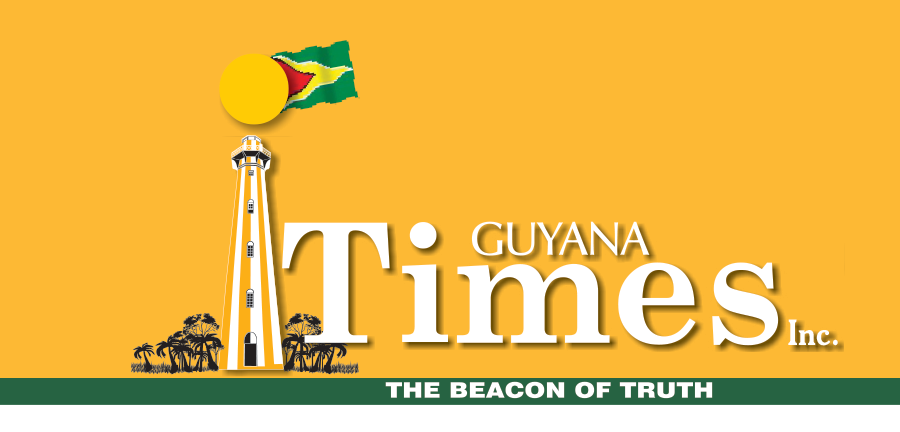…killed dredge owner during robbery
The Guyana Court of Appeal will today deliver its ruling in an application filed by manslaughter convict Travis McDougall, who is seeking to overturn his conviction and 25-year jail sentence over the 2014 fatal shooting of a dredge owner.

Back in 2017, McDougall was found guilty of unlawfully killing Ashokkoemar Raghu – who was shot dead during a robbery on Vlissengen Road, Georgetown – by a unanimous jury verdict following a trial at the Demerara High Court.
Trial Judge Navindra Singh sentenced him to 25 years in prison for the crime.
Raghu, of 77 Pike Street, Kitty, Georgetown, was pronounced dead on arrival at the Georgetown Public Hospital shortly after the shooting incident. His wife, Shyrazadi Raghu, was shot to her left thigh.
The couple was going to transact business with some $4 million when bandits on a motorcycle pounced on them at the traffic light while they were in a motor car. Ashok Raghu tried to resist the bandits and was fatally shot.
Before the Court of Appeal, McDougall’s lawyer, Narissa Leander, argued that the trial Judge erred when he placed the burden on her client to prove his defence. The lawyer contended that Justice Singh, in his summing up “actually placed the burden of proving the defence on [McDougall] by the words used in the summation”.
Leander said that even though Justice Singh told the jury that McDougall had nothing to prove, he went on to tell the jury, “The things that [McDougall] says to you, he does not have to prove it beyond a reasonable doubt like the prosecution”.
By those words, she added, the jury may have been led to believe that it was the burden of her client to prove his defence. The defence counsel also argued that Justice Singh failed to interrogate the weaknesses in the identification evidence before putting the case to the jury for deliberation on a verdict.
Some aspects of her submissions also focused on the evidence given by Shyrazadi Raghu, the dead man’s widow. Shyrazadi Raghu had pointed out McDougall on an identification parade. According to Leander, this witness testified that on the ID parade McDougall had a beard, and so did other persons. However, the lawyer pointed out that the woman could not say how many persons were bearded.
Counsel said that there were weaknesses in the ID evidence which the trial Judge should have interrogated during summing up and placed before the jurors for their consideration for them to decide whether the woman’s evidence could be relied on in determining the guilt of her client.
Another specific weakness in the ID evidence, she said, was that the trial Judge failed to put to the jury the fact that there was no evidence from the eyewitness as to how long she would have had the rider under her observation.
Leander recalled that in her evidence-in-chief, Shyrazadi Raghu indicated that the incident lasted for about 55 seconds. But, under cross-examination, defence counsel said “the incident was broken down to a maximum time of 14 seconds”.
Moreover, Leander contended that the trial Judge appeared to have suggested to the jury that Shyrazadi Raghu had the rider of the motorcycle under her observation for the entire duration of the robbery. This, Leander submitted, is contrary to the evidence as the eyewitness only testified to how long the incident lasted, and not to how long she had the rider under her observation.
For her part, Senior State Counsel Natasha Backer argued that the issues raised by Leander were not fatal to the credibility of the identification evidence.
She said that Shyrazadi Raghu testified that the incident took place in bright sunlight in the middle of the day and that she was seated in the front passenger seat of the car when it came under attack by a gunman on foot, while another man waited next to the car on a motorcycle.
“The witness spoke to being able to see the faces of these persons from a short distance away with nothing blocking her view at any time,” Backer added while pointing out that in relation to McDougall, the witness spoke about him looking into the car and looking at her.
Added to that, the prosecutor said that the eyewitness also stated that she kept her eyes on the men for the duration of the incident.
Regarding defence counsel’s submission that the eyewitness did not state how long she had the rider under observation, Backer argued that she was unaware of any specific time prescribed by case laws or legislation that is required to elapse before a witness is deemed to have made a proper observation.
Instead, the prosecutor said that it is the duty of the trial Judge to bring this and other factors to the jurors and give them the directions as required by the case laws. “The directions which the trial Judge gave, in this case, were more than adequate in the circumstances,” Backer submitted.
While there were discrepancies in the description given by the eyewitness compared to what a Police rank testified, she pointed out that the directions given to the jury by the trial Judge were more than adequate to render McDougall’s conviction safe.
“From the verdict, the jury was obviously convinced of [Shyrazadi Raghu’s] evidence. They obviously believed her in relation to not only what she saw on the day but the positive identification of McDougall,” Prosecutor Backer said.
McDougall is seeking to overturn his sentence and conviction and has proffered several grounds. Apart from contesting the identification evidence, he contended that the sentence imposed on him is excessive and not in keeping with established sentencing guidelines.
Deliberating on his case are Chancellor of the Judiciary, Justice Yonette Cummings-Edwards and Justices of Appeal Dawn Gregory, SC, and Rishi Persaud. (G1)
Discover more from Guyana Times
Subscribe to get the latest posts sent to your email.













